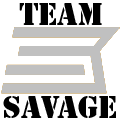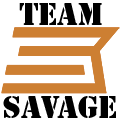I'm about ready to begin installing my pillars, but have a few questions first.
-Drilling Pillar holes - It will be necessary to drill the existing action holes larger to accommodate the pillars and epoxy....
What precautions/risks need to be considered against chipping the thin laminates - especially the rear hole where the sear cut is? I ordered a 7/16" forstner bit with serrated cutter- it recommends 1500 rpm for hardwood & 2500 for softwoods-my drill press can do 3100, 2340, 1720, 1100, 620 - would 1720 or 1100 be the appropriate setting? Any other drilling tips I need to know? If this bit is not a good choice, I would be willing to get another type bit.
How do you align the bit so it is both centered and perpendicular to the existing hole ? My plan is to use a 1/4" rod chucked in the press and eyeball it into place, then clamp everything down... sound about right?
Does it matter which side you drill from? Do you drill part way from each side or just plunge on thru?
The rear hole is covered by the trigger guard and the front is countersunk with a (plastic) escutcheon, so it appears to me, I can bore all the way thru on both. Any reason to stop before going all the way thru?
If drilling from the top (action side) the rear hole may have a lot of risk for bit chatter & tearout, being that half the hole is already cut out for the trigger/sear - so maybe coming in from the bottom would be safer and give the bit more side support when it reaches the thin areas - what do you think?
Another question is should I form a putty dam to keep epoxy out of the trigger/bolt handle area (basically everything behind the sear bar) but also try to get a little bedding on that small area of receiver behind the pillar?
Drilling the front hole out seems less risky, and if either end chips it can probably be repaired with epoxy.
-Pillar Length
After drilling hole, the next issue is just how long should the pillars be? That's simple - they should bridge the gap between the receiver bottom and the screw shoulder... I figure one way to get an approximate distance is to measure the action screws when seated in the receiver (also considering escutcheon or bottom metal). Of course (as I understand it) the "waterline" of the barreled action should be aligned and level with the top of the stock.
A couple of other variables may come into play determining how long the pillar needs to be. They may only account for a few thousandths difference, but should be determined beforehand to make sure the final lengths are not too long or short
Another consideration is how thick is the epoxy bed supposed to be minimum?
This will raise the action off the wood, which affects how long the pillars need to be (and the screws), everything needs to be test fit beforehand and adjusted as necessary. The bed will go in after the pillars are set, so whatever it is, the epoxy will fill the space... My question is - what is a typical thickness -should it be closer to .05" or .125" thick?
The other variable is the thickness of the stock at the screw holes. Commercial pillars are often pre-cut for specific actions. Sometimes they may need to be trimmed or even a spacer devised to maintain metal to metal contact.
I have done a bit of measuring, and it appears the factory stock and my Boyde stock are slightly different. The rear pillar looks like it's a good length, but initially my front hole seems to be significantly longer than the designated pillar.
I will have to see how the action levels up and how to deal with the plastic escutcheon, which is counter sunk further than it looks. I can't get it out without damaging the stock, so I plan on drilling thru it - It's big enough diameter that I think I can drill the bottom out and if the pillar fits flush, then I can use a washer under the screw head or if the pillar is too short, I can sink a metal spacer in to sit between the screw head and pillar. I was lucky to find a spacer of just the right size that will be below the stock - so I will have to make a some adjustment when doing the front hole.
- I made action alignment screws by cutting the heads off 2" long smooth-shank grade 5 bolts and threading the cut end, and will wax them good so they don't get stuck.
- I'm leaving my pillars flat, so at the receiver there will be spaces at the edges where epoxy will likely flow... do you fill that gap with putty or put release agent at the top contact points? How do you keep the epoxy from gluing the receiver to the pillar when installing the pillar? (it just occured to me you don't have to epoxy all the way to the top of the pillar) - just wax the tops and fill in the gaps at final bedding... yes?
Sorry I get so wordy - thanks for all your advice.







 Reply With Quote
Reply With Quote




Bookmarks